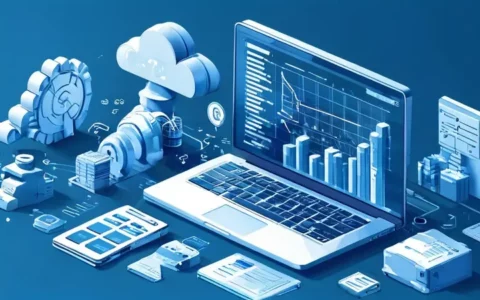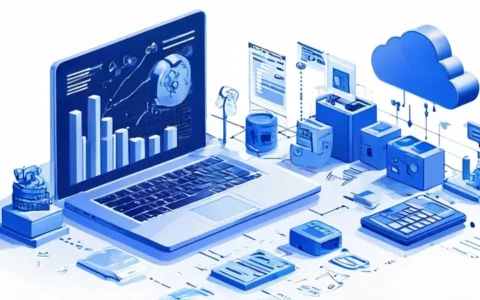
The English term for 编程单片机 is "Programming microcontrollers". Among its multiple facets, one of the most intriguing aspects to delve into is the choice of programming languages. The process of programming a microcontroller essentially revolves around instilling a set of instructions that the hardware can execute to perform specific tasks. This pivotal action lays the groundwork for creating a variety of applications from simple LED light controls to complex embedded systems found in modern vehicles.
一、INTRODUCTION TO MICROCONTROLLERS
Microcontrollers serve as the brain within a myriad of electronic devices, from consumer electronics to industrial machinery. The power of a microcontroller lies in its ability to perform specific tasks in real-time, making it a fundamental component in embedded system design. This capability is primarily fueled by its architecture, which integrates a processor, memory, and input/output interfaces onto a single chip.
二、CHOOSING A PROGRAMMING LANGUAGE
Selecting the right programming language is crucial for microcontroller programming. C and C++ are dominating the scene due to their efficiency and control over hardware. However, newer languages, such as Python, are gaining traction for introductory learning purposes and rapid prototyping, thanks to their simplicity and ease of use.
三、DEVELOPMENT ENVIRONMENTS AND TOOLS
The development environment sets the stage for programming microcontrollers. Integrated Development Environments (IDEs) like AVR Studio, MPLAB, and Arduino IDE are prominent choices that offer code editing, compiling, and debugging functionalities in a unified interface. Choosing the right IDE can significantly streamline the development process by providing the necessary tools and resources tailored to specific microcontroller families.
四、PROGRAMMING FUNDAMENTALS
Understanding the basics of microcontroller programming is imperative. This includes grasping concepts such as digital I/O, analog input, pulse-width modulation (PWM), and serial communication. Mastering these fundamentals enables developers to harness the full potential of microcontrollers, leading to the creation of innovative applications.
五、FROM CODE TO ACTION
The journey from writing code to executing a physical task embodies the essence of microcontroller programming. This transition involves writing source code, compiling it into machine language, and finally, uploading it to the microcontroller. Debugging plays a critical role in this phase, as it helps identify and correct errors, ensuring the system operates as intended.
六、REAL-WORLD APPLICATIONS
Microcontrollers are the cornerstone of various applications, ranging from autonomous vehicles and drones to smart home devices and wearable technology. The versatility and scalability of microcontrollers make them indispensable in today’s fast-paced technological landscape. Their ability to process data and control devices in real-time opens up endless possibilities for innovation and development.
In conclusion, programming microcontrollers is a dynamic field that integrates the art of coding with the precision of electronic design. As technology continues to evolve, the potential for microcontrollers in shaping the future of the digital world remains boundless. The journey from selecting a programming language to witnessing your code come to life in a tangible device is a rewarding experience that underscores the importance of microcontrollers in modern technology.
相关问答FAQs:
Q: What is the English term for programming a microcontroller?
A: The term for programming a microcontroller in English is "embedded programming" or "microcontroller programming".
Embedded programming refers to the process of writing software code that is specifically designed to run on a microcontroller, which is a small computer on a single integrated circuit. Microcontroller programming involves writing instructions and algorithms in a programming language such as C, C++, or Assembly language that controls the behavior and functionality of the microcontroller. This programming is done to create various applications and systems, such as controlling electronic devices, robotics, IoT devices, and more.
Q: Why is programming microcontrollers important?
A: Programming microcontrollers is important as it enables us to control and automate various devices and systems.
Microcontrollers are used in a wide range of applications, from simple home appliances to complex industrial machinery. By programming microcontrollers, we can define the behavior and functionality of these devices, making them perform specific tasks based on the instructions we provide.
For example, in home automation systems, microcontrollers can be programmed to control lights, temperature, security systems, and more. In robotics, microcontrollers can be programmed to control the movement and actions of robots. In the automotive industry, microcontrollers are used for engine management, entertainment systems, and safety features.
Overall, programming microcontrollers allows us to customize and optimize the functionality of various electronic systems, making them more efficient and tailored to specific needs.
Q: How can one get started with microcontroller programming?
A: Getting started with microcontroller programming requires a few basic steps to be followed.
-
Select a microcontroller: There are various microcontroller options available in the market, such as Arduino, Raspberry Pi, PIC, and more. Choose a controller that suits your needs and familiarity with programming languages.
-
Learn a programming language: Microcontrollers can be programmed using different languages like C, C++, or Assembly language. Choose a language that you are comfortable with and start learning its syntax and concepts.
-
Get the necessary tools: To program a microcontroller, you will need a development board, a programming software or Integrated Development Environment (IDE), and a USB cable to connect the microcontroller to your computer.
-
Start coding: Begin with simple projects and gradually progress to more complex ones. Utilize online resources, tutorials, and forums for guidance and support. Experiment with different functions and features of the microcontroller to gain a deeper understanding.
-
Test and debug: It is essential to thoroughly test your code and debug any errors or issues. Using debugging tools and techniques, identify and rectify the problems in your code to ensure proper functionality.
By following these steps and practicing regularly, you can gradually enhance your microcontroller programming skills and create a wide range of innovative projects.
文章标题:编程单片机的英文是什么,发布者:worktile,转载请注明出处:https://worktile.com/kb/p/1630290

 微信扫一扫
微信扫一扫  支付宝扫一扫
支付宝扫一扫 




